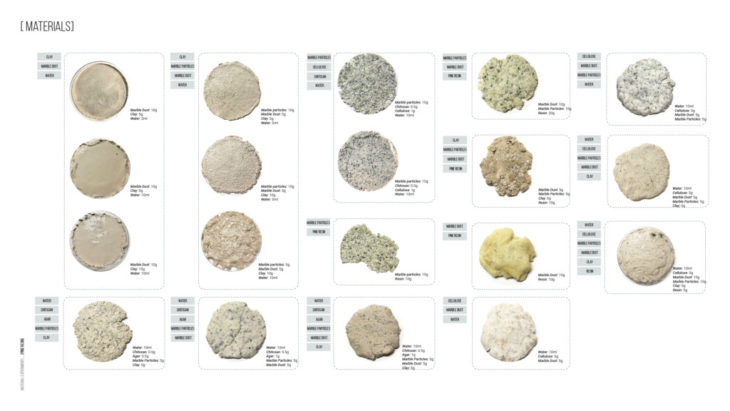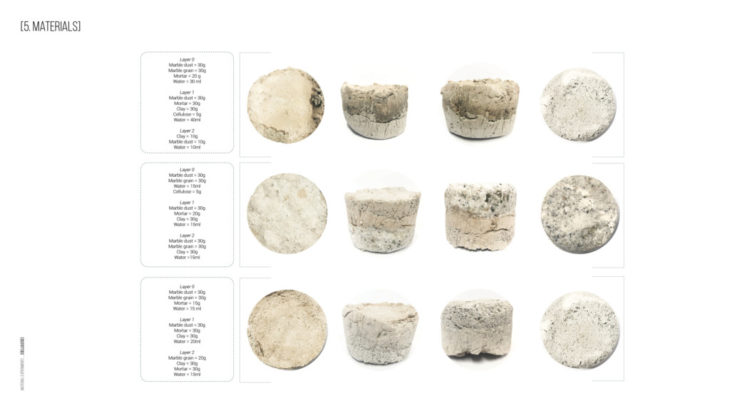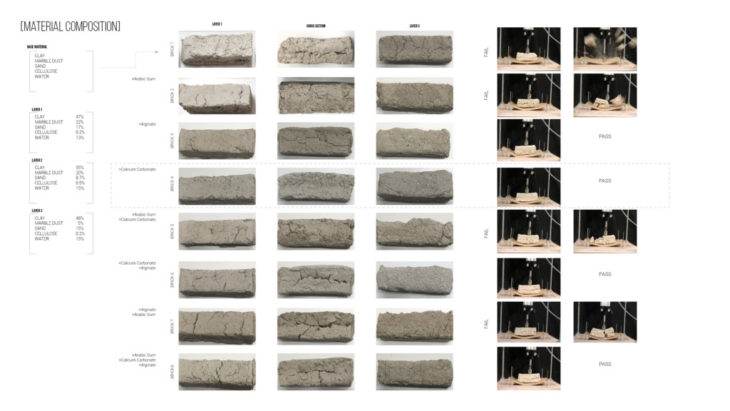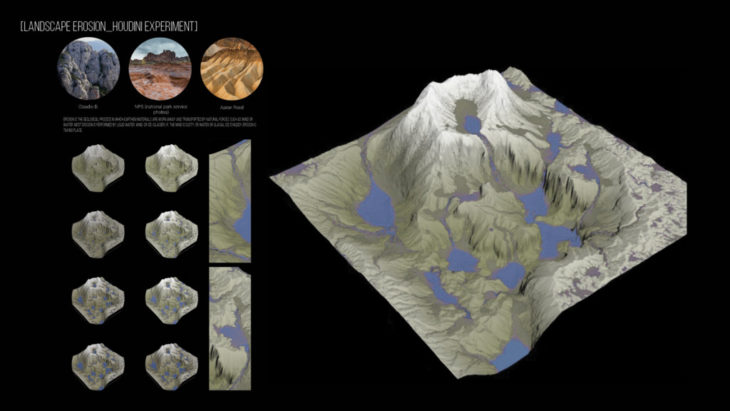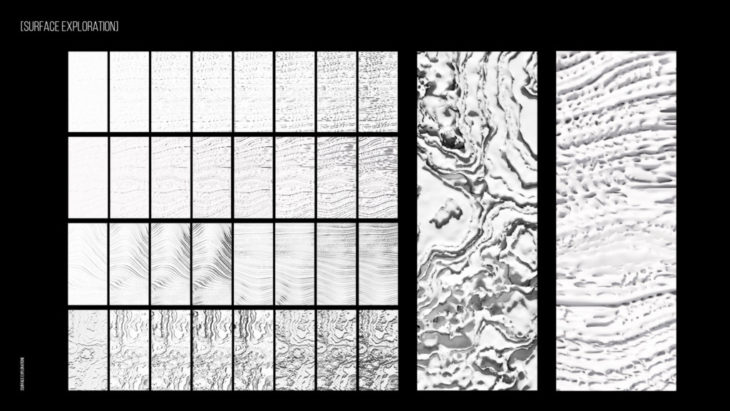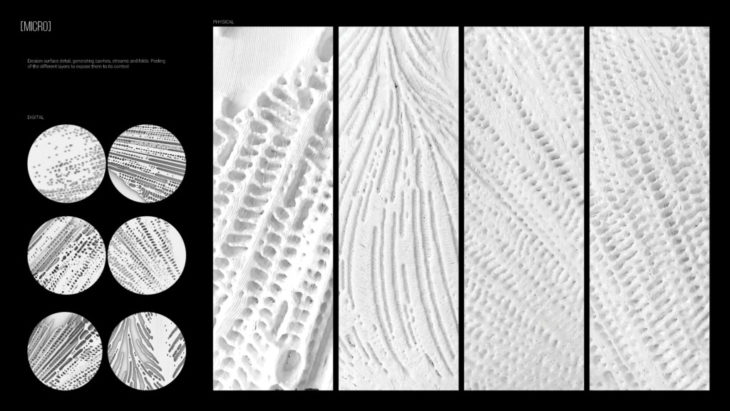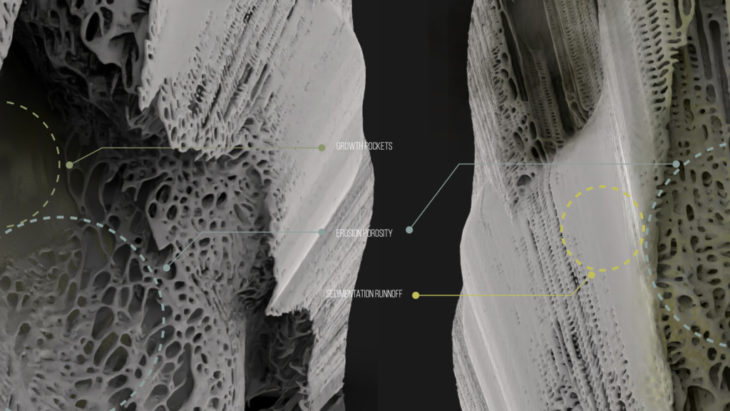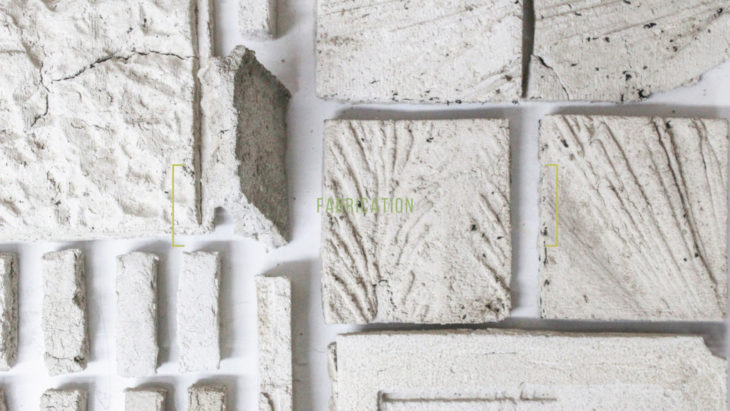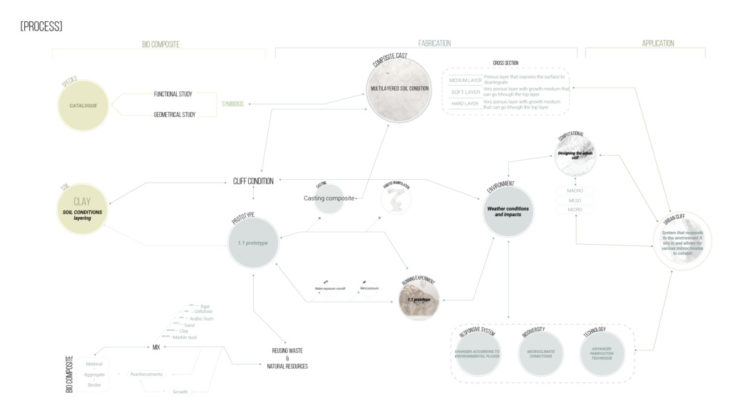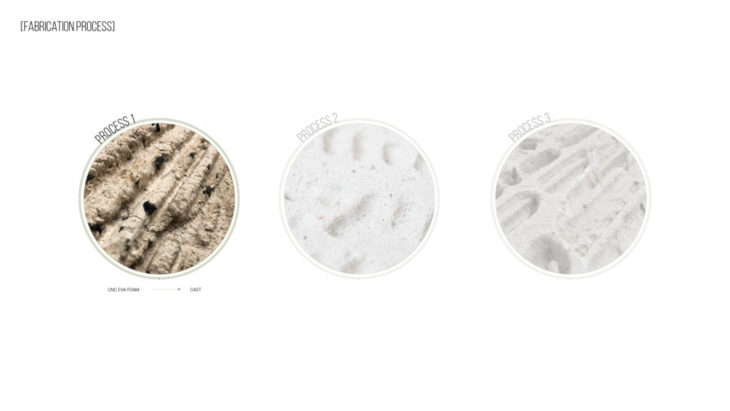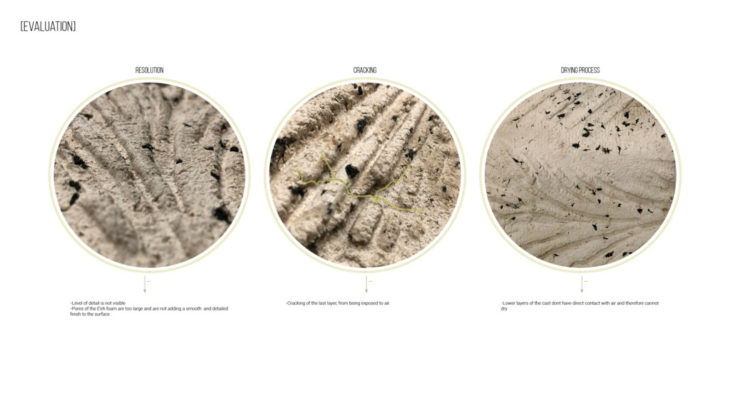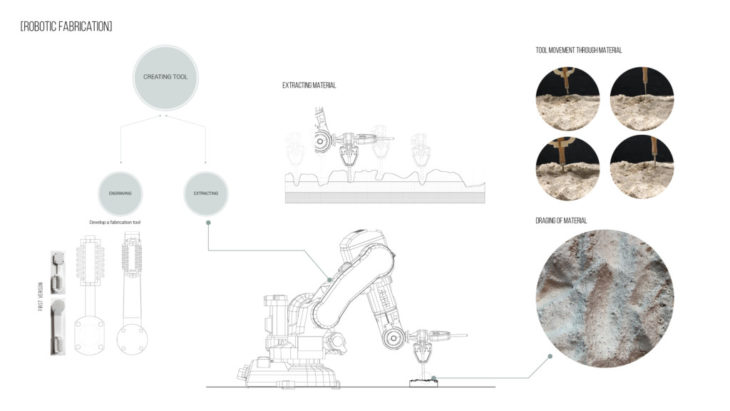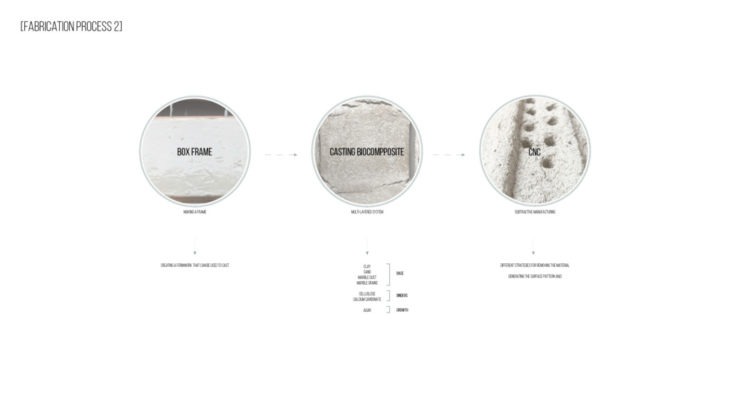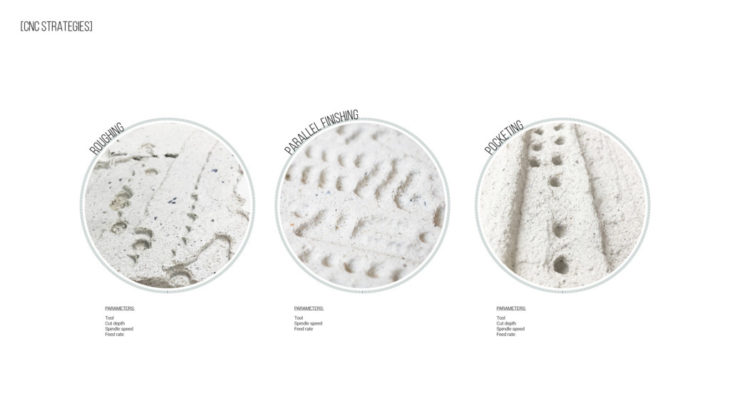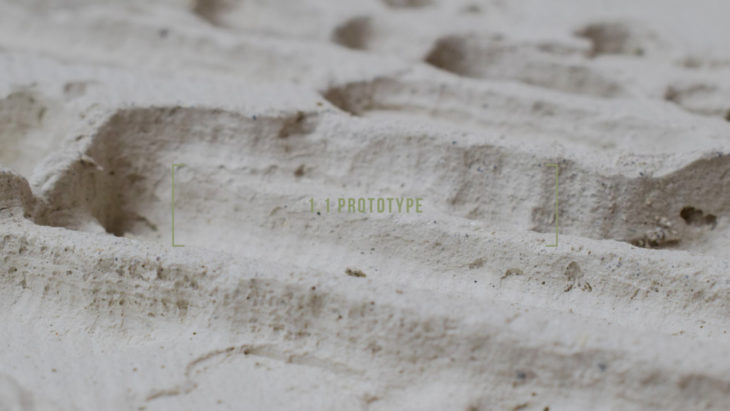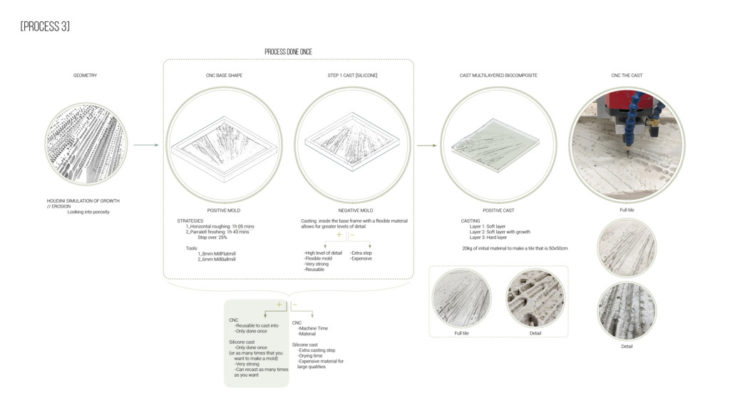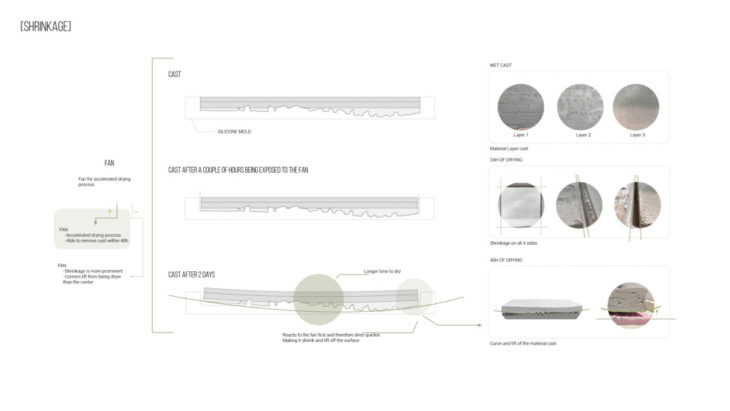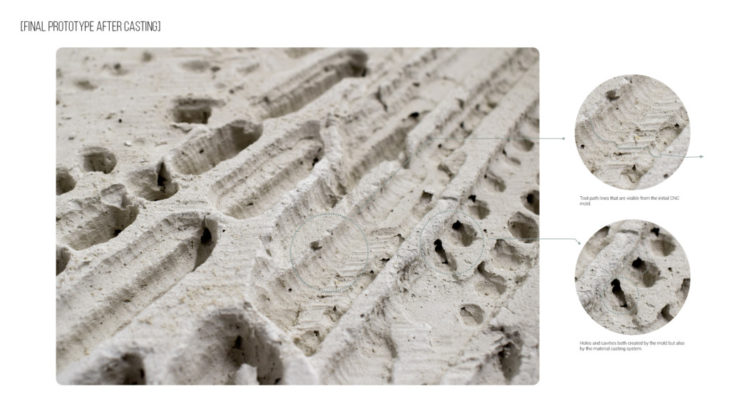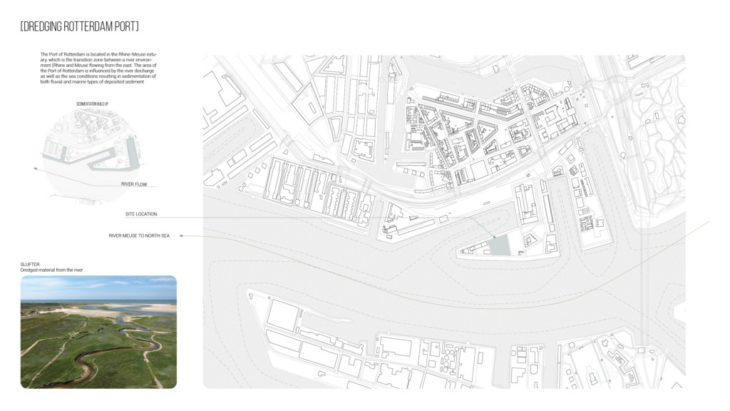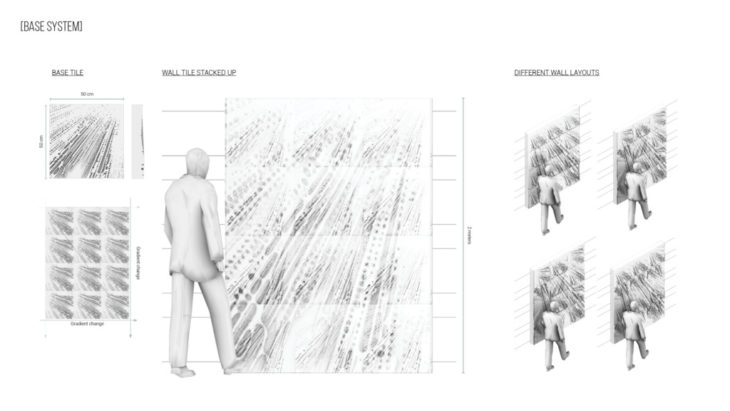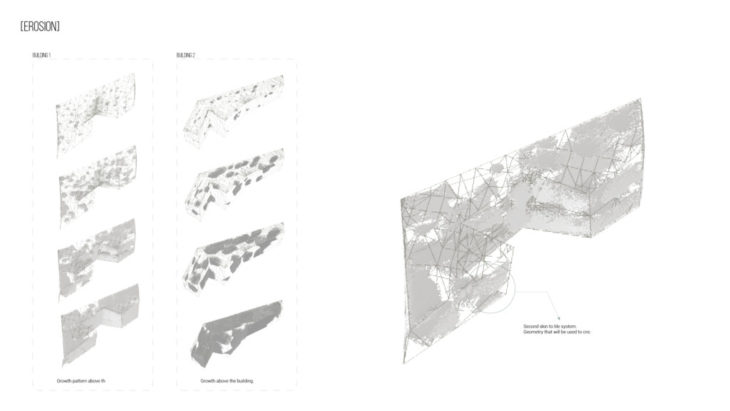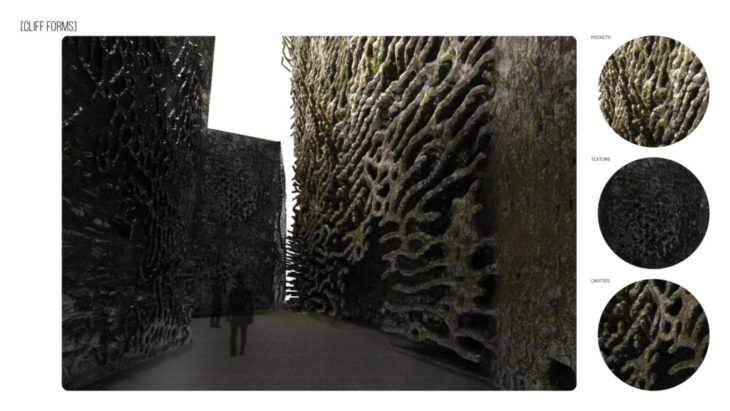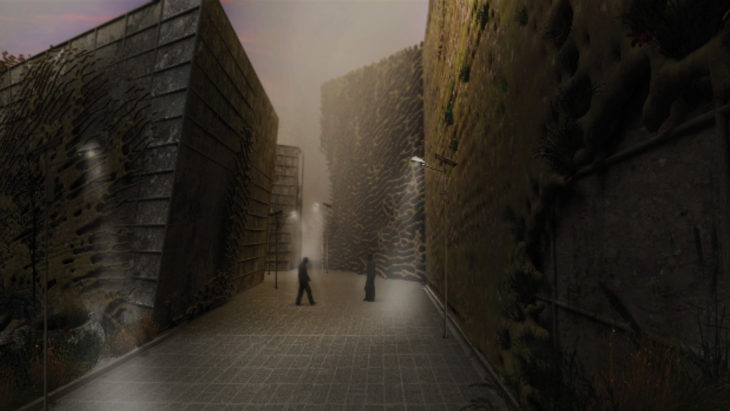URBAN TECTONICS
[a Morphological Biocomposite Research]
This research aims to investigate different material and construction methods to address the current urbanization and ecological crisis in the built environment, through a focused research and understanding of cliff tectonics and its ecological system. By addressing the ageing buildings and the way they have been conditioned in the existing environmental surrounding, introduces possibilities for new morphological systems to be developed. The current static nature of our urban areas don’t allow for any formal changes within its skin condition, generating problems in the longevity of the construction system.
This research proposes a multilayered biocomposite made from a mixture of waste and raw materials as a fabrication framework. Its aim is to generate microclimates that dynamically respond to its context and allow various biodiverse ecosystems to take place. The biocomposite will be evaluated through different material densities and formations that could allow different levels of growth and geological structures to occur. Through the means of a subtractive manufacturing process, the layers will start to be exposed and create different tectonics for pockets, cavities and fold to develop within the the surface. This will be exposed to a series of experiments of accelerated environmental factors to see how the biocomposite responds and adapts to its setting and starts changing over time. This investigation proposes a new language for a morphological architecture that focuses on creating various microclimates that allow for different biodiverse systems to occur within a vertical surface that is dynamic and responsive within an urban context.
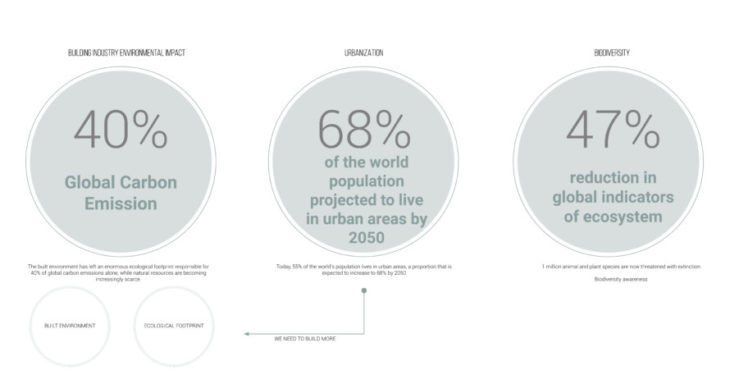
By understanding our current crisis in the way we build, there is a need for our construction process to change and to see what resources could be used in order for our ecological footprint to be minimized and for the ecosystem to keep growing.
Cliffs allow for a large biodiverse ecosystem to inhabit its skin, through all of its folds, joints, faults, cavities and pockets, along its entire surface. Species are able to adapt to these different micro environments created along its verticality.
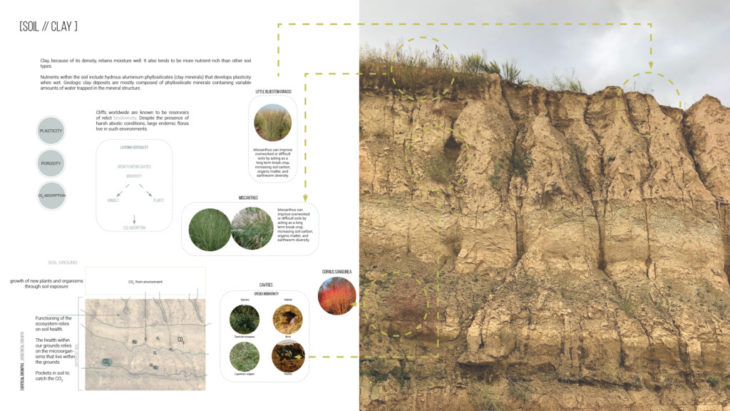
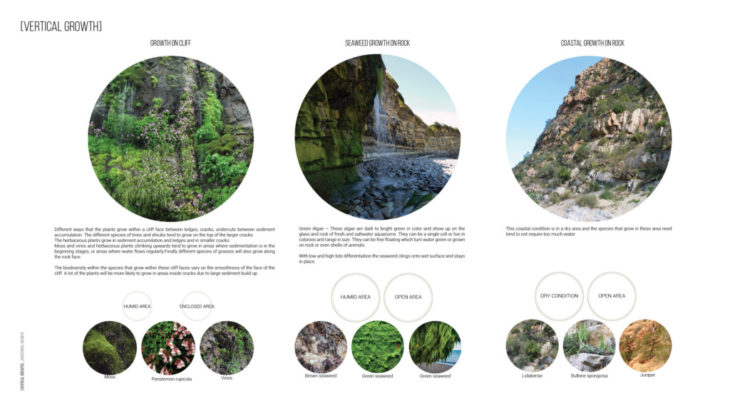
Material Exploration//
Cliff Formations//
Fabrication//
Process 01//
Process 02//
Process 03//
Design Application //
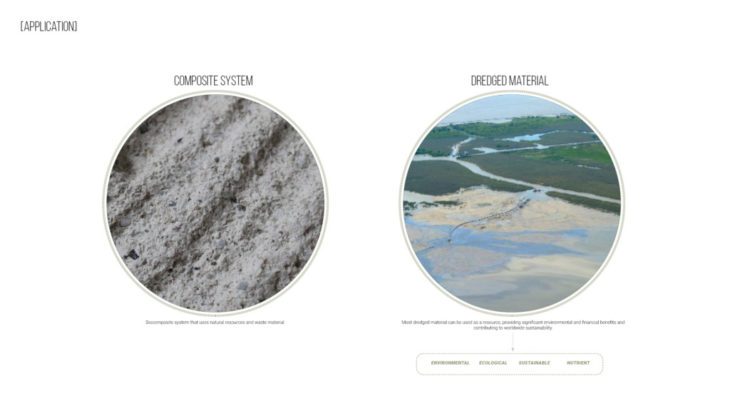
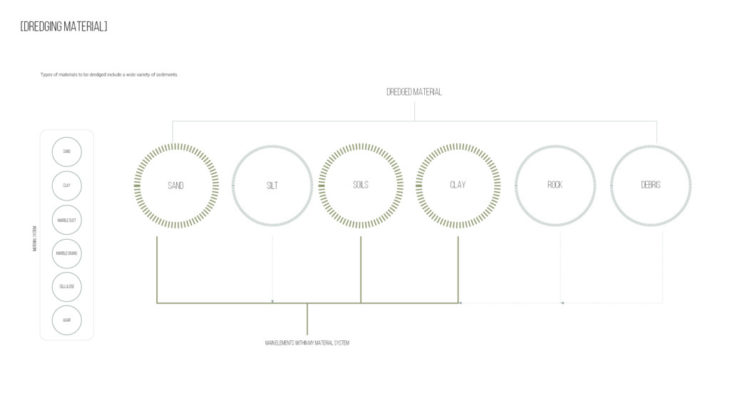
Urban Tectonics: A Morphological Biocomposite Research is a project of IAAC, Institute for Advanced Architecture of Catalonia developed in the MAA02 2019/2021
Student: Léa Garguet-Duport
Faculty: Marcos Cruz and Kunaljit Chadha
